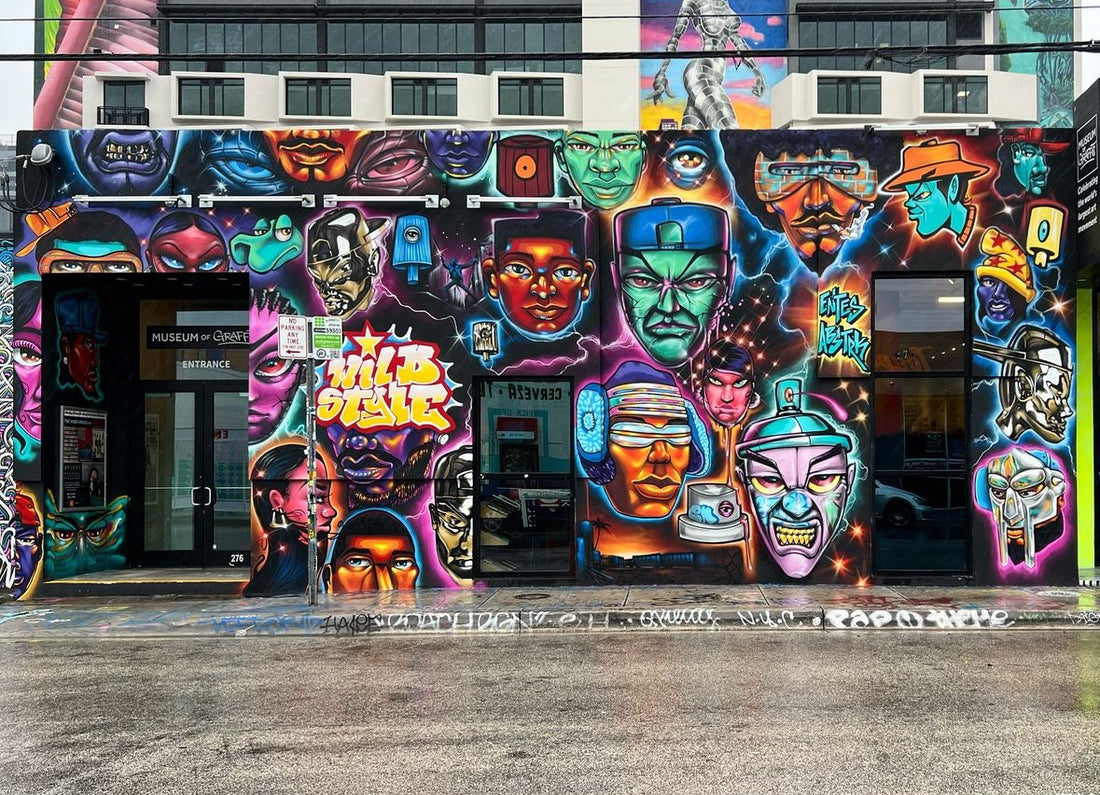In urban spaces around the world, vibrant visuals often adorn walls, turning mundane city scapes into canvases of expression. Yet, two prominent forms of this public art—graffiti and street art—frequently spark debate over their definitions, origins, and impacts. While they share some similarities, they are distinct in their goals, techniques, and cultural significance. Understanding these differences can provide deeper insights into their roles in modern urban environments.
Graffiti From A Historical Perspective
Graffiti has a long and storied history, dating back to ancient civilizations. The term itself originates from the Italian word “graffiato,” meaning “scratched.” Historically, graffiti involved inscriptions and markings on surfaces, often for purposes of communication or political statements.
Modern graffiti, however, is frequently associated with the hip-hop movement of the 1970s in New York City. Emerging as a form of rebellion and self-expression, it often features stylized, elaborate tags and throw-ups. Tags are simple, signature-like designs, while throw-ups are more complex and colorful. Graffiti artists—often referred to as “writers”—aim to leave their mark on the urban landscape, making their work visible and recognized. The main distinction here is that graffiti is about LETTERS and your own personal style that you attach to your name or whatever you choose to write.
Street Art: An Artistic Evolution
Street art, in contrast, is a more contemporary development that gained prominence in the 1980s and 1990s. While it encompasses a variety of artistic styles and techniques, it is typically characterized by its aesthetic approach and intent. Street art includes stencils, posters, murals, and installations that are deliberately crafted to convey artistic messages or commentary.
One of the defining features of street art is its emphasis on artistic quality and conceptual depth. Unlike traditional graffiti, which might focus on the artist’s name, style, or reputation, street art often seeks to engage viewers on a more intellectual or emotional level. Notable street artists like Banksy and Shepard Fairey have used their work to provoke thought and address social issues, blurring the lines between art and activism. Wynwood Walls is a good place to see street art after visiting Museum of Graffiti.
Public Perception and Legalities
The public perception of graffiti and street art can vary widely. Graffiti is often viewed with suspicion due to its association with vandalism and illegal activity. It frequently appears in neglected areas and can be perceived as a form of defacement rather than artistic expression. However, when graffiti is created with permission or as part of community projects, it can be appreciated for its artistic value and cultural significance.
Street art, on the other hand, tends to enjoy a more positive reception, partly due to its often higher artistic standards and its placement in more prominent or sanctioned spaces. Many street artists collaborate with property owners and communities, leading to murals and installations that enhance urban environments rather than detract from them.
Cultural Impact and Legacy
Both graffiti and street art contribute significantly to urban culture. Graffiti reflects a raw, unfiltered form of personal and social expression, often embodying resistance or defiance. Its legacy is deeply rooted in its role as a voice for marginalized communities and as a symbol of rebellion.
Street art, while also an expression of individual creativity, is often seen as a bridge between traditional art forms and contemporary social commentary. It frequently intersects with galleries, museums, and public installations, earning it a place within the mainstream art world.
Conclusion
While graffiti and street art share some common ground, their differences are crucial in understanding their respective roles in urban culture. Graffiti is steeped in a tradition of personal expression, style writing, and rebellion, while street art often embraces a broader artistic dialogue and community engagement. Both forms contribute to the rich tapestry of public art, challenging perceptions and enriching cityscapes with their unique voices. Recognizing these distinctions not only enhances our appreciation of urban art but also acknowledges the diverse ways in which artists interact with their environments.

